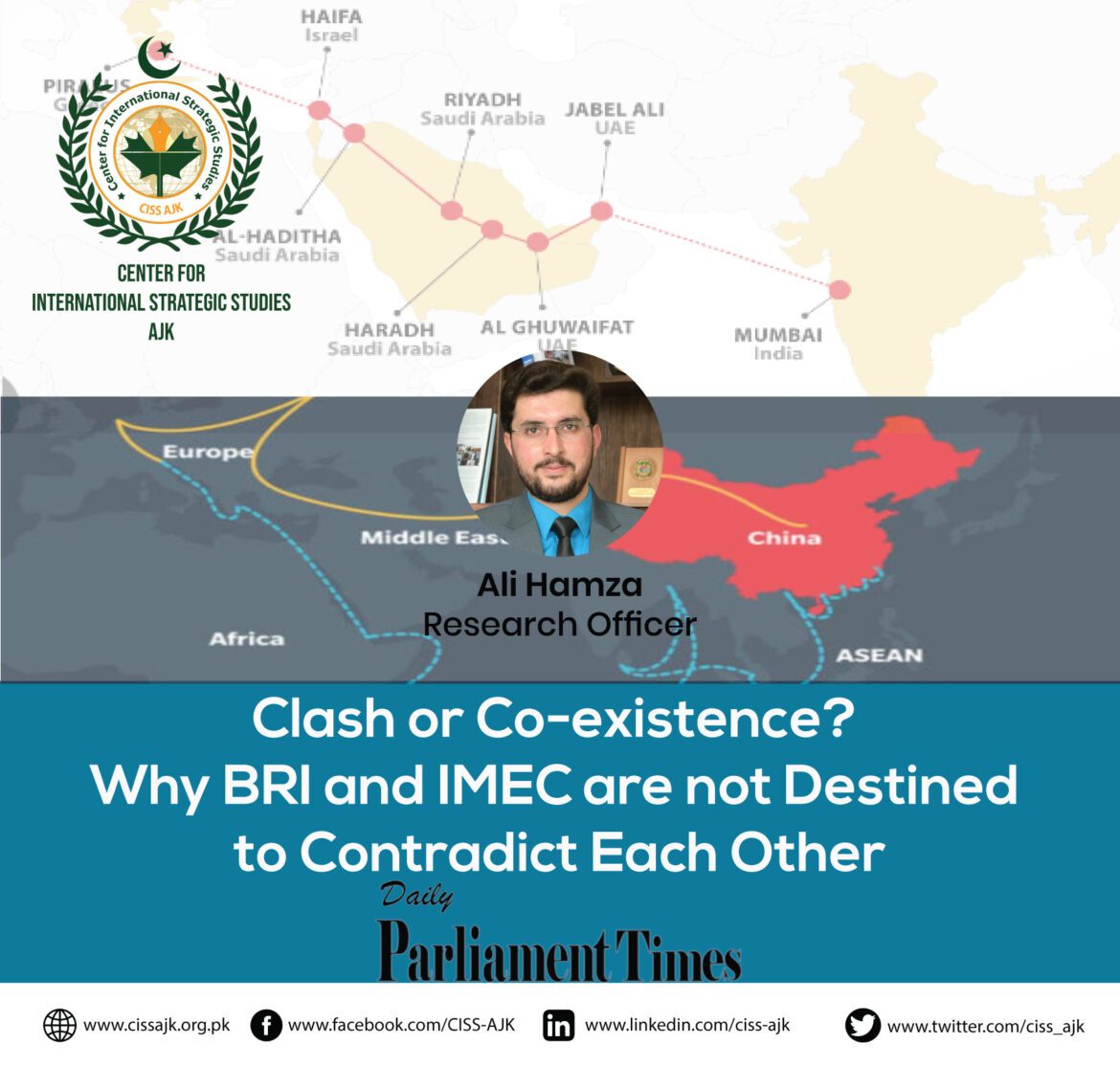659
In a highly integrated world, the complex interdependence among states has necessitated the need to establish better channels of trade and communication. Regional Economic Integration is the idea that collaboration between the neighbors on the economic front provides an economic synergy that is mutually beneficial and multiplies the opportunity for the states exponentially. With the rise of the phenomenon called “globalization,” more and more states have embraced the idea of economic integration. “Economic Corridors” are the zenith of this integration model, where a road or rail network, running across different states, provides them extensive economic opportunities and enhances their access to the markets. China’s Belt and Road Initiative has been the trailblazer of this trend, bringing forth the idea of a Chinese economic model for the world. Historically, the “Silk Road” is considered the pioneer model of trade and connectivity that spanned across Asia, connecting the East to the West. The Silk Road facilitated the exchange of goods, culture, ideas, and technologies between different civilizations and regions from around the 2nd century BCE to the 14th century CE. Its proponents have branded the Chinese model of economic connectivity in the shape of BRI as “the New Silk Road”. However, several segments of the world have viewed BRI with a skeptical lens, as the Chinese model of investment is seen as a debt trap by these segments. Moreover, the enhancing global power competition between China and the US has further increased the speculations about the Chinese ambitions in the garb of BRI. On the eve of the 20th meeting of G20 countries in New Delhi this year, another consequential announcement was made on the sidelines of the summit. This announcement unveiled the building of a road and railway track that would connect India, the Middle East, and Europe. The project was named IMEC (India-Middle East-Europe Economic Corridor). Soon after the announcement of IMEC, speculations about its regional and global implications were on the rise. Commentators across the globe have opined about the proposed corridor differently, some considering it a “game changer” while others merely discarding it as “impractical. However, the most worrying aspect of it has been the dominant view that IMEC will be a move countering China’s BRI. The Belt and Road Initiative (BRI) is a large-scale infrastructure and economic development project initiated by the Chinese government in 2013. The BRI aims to promote economic integration, trade, and connectivity between China and various regions around the world, primarily in Asia, Europe, Africa, and even parts of South America. At the heart of the conception of economic corridors lies the idea of collaboration instead of confrontation. Pursuing confrontational policies in the garb of construction of corridors is contradictory to the core idea of economic integration. Thus, “the clash of corridors” is not only an unbridled expression of over-reliance on the realistic worldview, but it also ignores the fact that the Cold War conception of world politics may not be feasible to explain the world today. Although there is no doubt that the world is again witnessing an enhancing rivalry between the US and China, at the same time the allies of both superpowers are not willing to let go of their engagements with each other to prove their loyalty to either of the superpowers. This is visible in the case of the Middle East and Europe. Both these regions have a historical relationship with the US, but they are not ready to share their trade and cooperation with China at the same time. Economic corridors are opportunities for such states to benefit from their potential and maximize the utility of the opportunities the corridor brings along. So, there is little chance that any state would pander to the demands of a superpower and let go of an economic opportunity a corridor provides. A comparison of the proposed IMEC and the BRI further proves the point. IMEC intends to comprise two corridors, the Eastern and the Western corridor. The Eastern corridor will join India to the Middle East via sea, while the Western corridor will join the Middle East to Europe by roads and railway networks. Looking at BRI, it is clear that BRI’s no project runs parallel to the path of IMEC. Thus, both these initiatives of economic integration are not of a competitive nature essentially. Radha Kumar, an independent analyst called the initiative an alternative to BRI but she was of the view that it would not essentially undermine China’s BRI. Moreover, IMEC might be an alternative to the usual Suez Canal route for India, but BRI is a continuation of an existing trade route, as old as the Silk Road. It is also important to note that the proposed route for IMEC covers the largest tract of land in the Middle East, and thus it would most potentially benefit the Gulf States. It would be wrong to blow its implications for the Indo-Pacific out of proportion. IMEC appears to be an initiative to bring Arab states and Israel together, but it is not an initiative that essentially antagonizes BRI. The Chinese Ministry of Foreign Affairs has itself called it a welcome move, with the caveat that such corridors must not be used for geopolitical motives. This is a testament of the fact that unless IMEC becomes a geopolitical tool in the longer run, its purpose is not to undermine BRI. Global South does not afford to fight for the motives of superpowers. The only objective of deprived states is to benefit from whatever opportunities they are provided with. Projects like IMEC and BRI have the potential to assuage global inequalities to some extent. If they plummet to the status of geopolitical tools, the gravest loss will be felt by the already downtrodden. Thus, these corridors need to be utilized for regional economic integration and enhanced economic cooperation, instead of pitching them against each other in superpower rivalry. IMEC and BRI can exist simultaneously and bring forth unprecedented economic opportunities, without “clashing” with each other



